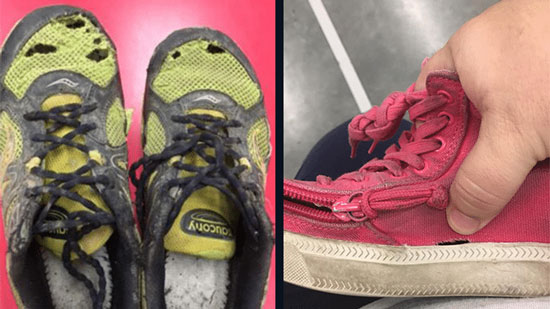Are Your Child’s AFOs Causing Blisters and Skin Breakdown? – Check the Shoes and Socks!

AFOs can greatly improve your child’s walking gait and benefit your child’s mobility challenges, as well as support your child’s weak muscles. Other benefits include improving your child’s overall posture, preventing foot deformity, and providing a stable base of support.
The biggest downside of wearing AFOs is that children can have a really hard time getting used to them since most of them are made of hard plastic. If the AFOs are not made correctly fitted inside the wrong pair of shoes you will make your child more susceptible to skin breakdown and other issues.
Your child might be wearing the best-fitting AFO that you’ve ever seen, but if you get them in an ill-fitting shoe, it basically defeats the whole purpose of wearing the AFO. One of the most common reasons why children develop blisters is from wearing the wrong type of shoes with their AFOs. If the AFO doesn’t fit properly inside your kids’ shoes, it will end up rubbing your child’s feet the wrong way leading to discomfort and blisters.
Some children develop blisters on their legs while some others develop blisters on their feet. Let’s first identify where exactly your child is getting blisters and based on that I will be able to assess whether your child’s shoes, AFOS, or socks are causing the blisters.
5 Most Common Places Children Develop Blisters
The most common area where children develop blisters from wearing AFOs is their feet. I have seen children develop redness or blisters on their legs and the top and side of their feet, toes and heels.
Below you can find the 5 most common areas where children develop blisters from wearing AFOs:
1️⃣ Top Part of Their Feet
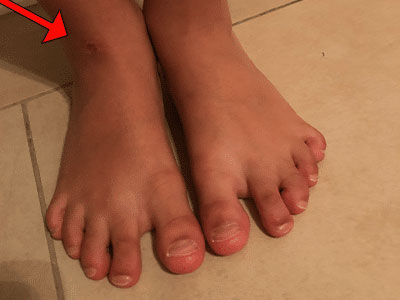
2️⃣ Side Part of Their Feet
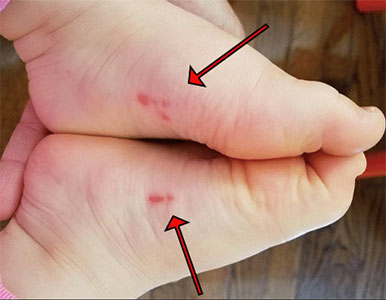
3️⃣ Toes
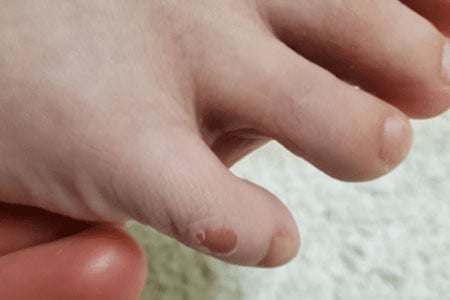
4️⃣ Legs
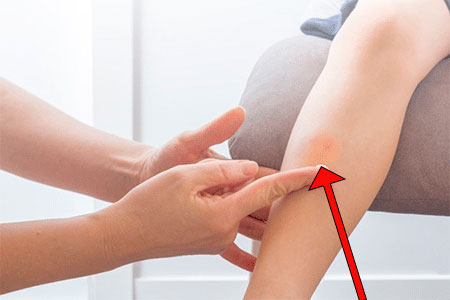
5️⃣ Heels
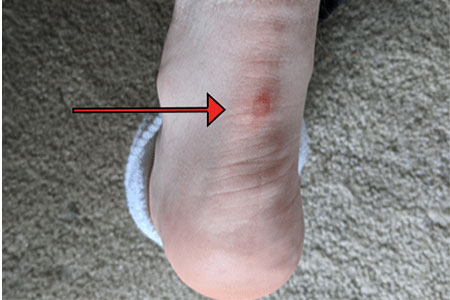
What is Causing Your Child’s Skin Breakdown and Blisters?
Below you will find the 3 most common reasons why children develop blisters and skin breakdown when wearing AFOs:
➡️ Reason #1: Your child’s shoes were fitted too big to accommodate the AFOs.
Most skin breakdowns and blisters occur because the AFO can move too much inside the shoe. This constant movement and friction between the AFO and your child’s feet might be causing blisters.
I have noticed throughout the years how most children who walk to the shoe store are wearing shoes that are too big. Parents usually explain to me how they had to buy shoes a lot bigger to accommodate the AFO.
Never buy bigger shoes to accommodate the AFOs. It’s always better to go wider and deeper than to go bigger.
I have fitted a selection of shoes that have proven to be the most effective ones for children who wear AFOs as they are supportive, provide extra depth, and they are available in wide and extra wide widths.
If your child wears shoes with shoelaces I strongly suggest that you apply a specific shoe lacing technique that works wonders for children who wear AFOs. This specific shoe lacing technique helps keep the AFO in place and prevents it from moving excessively inside the shoes. My coworker who has over 20 years of shoe fitting experience taught me this lacing technique.
➡️ Reason #2: Your child is wearing the wrong type of socks.
Your child’s socks act as a protective barrier between your child’s feet and the AFOs.
It’s important that your child’s socks provide a non-binding Halo Top to prevent the socks from slipping down and prevent irritating indentions around the ankle. Your kids’ socks should also provide extra padding to increase comfort and prevent blisters.
It’s also important that your child’s socks wick away perspiration and keep skin dry and less susceptible to shear forces.
Most children don’t speak up when they develop blisters on their feet or legs, so it’s a good idea for parents to get white socks so that if a sore starts to blister it will show on the sock.
➡️ Reason #3: Your child’s AFOs were not fitted correctly to begin with.
The AFOs might not have been fitted properly to being with and they might need to be readjusted or the orthotist might have to put extra padding in certain areas of the AFOs.
If you have any doubts or questions about whether your child’s AFOs are fitting correctly I suggest that you contact me directly and I will help you figure it out:
My Final Thoughts on Preventing Blisters and Skin Irritations from AFOS
Wearing the correct type of socks and proper shoe fitting is key for avoiding skin issues. Always make sure that the AFOs straps fasten securely.
Other factors that might be causing your child’s blisters and skin irritations:
- Change in body shape (growth, tonal fluctuations, changes in ankle/foot alignment)
- Poorly dried skin
If after trying a different pair of socks and shoes your child is still getting blisters and skin irritation I suggest that you have your child stop wearing the AFOs and contact your orthotist for a review appointment.
Please share your feedback in the comments section below.


